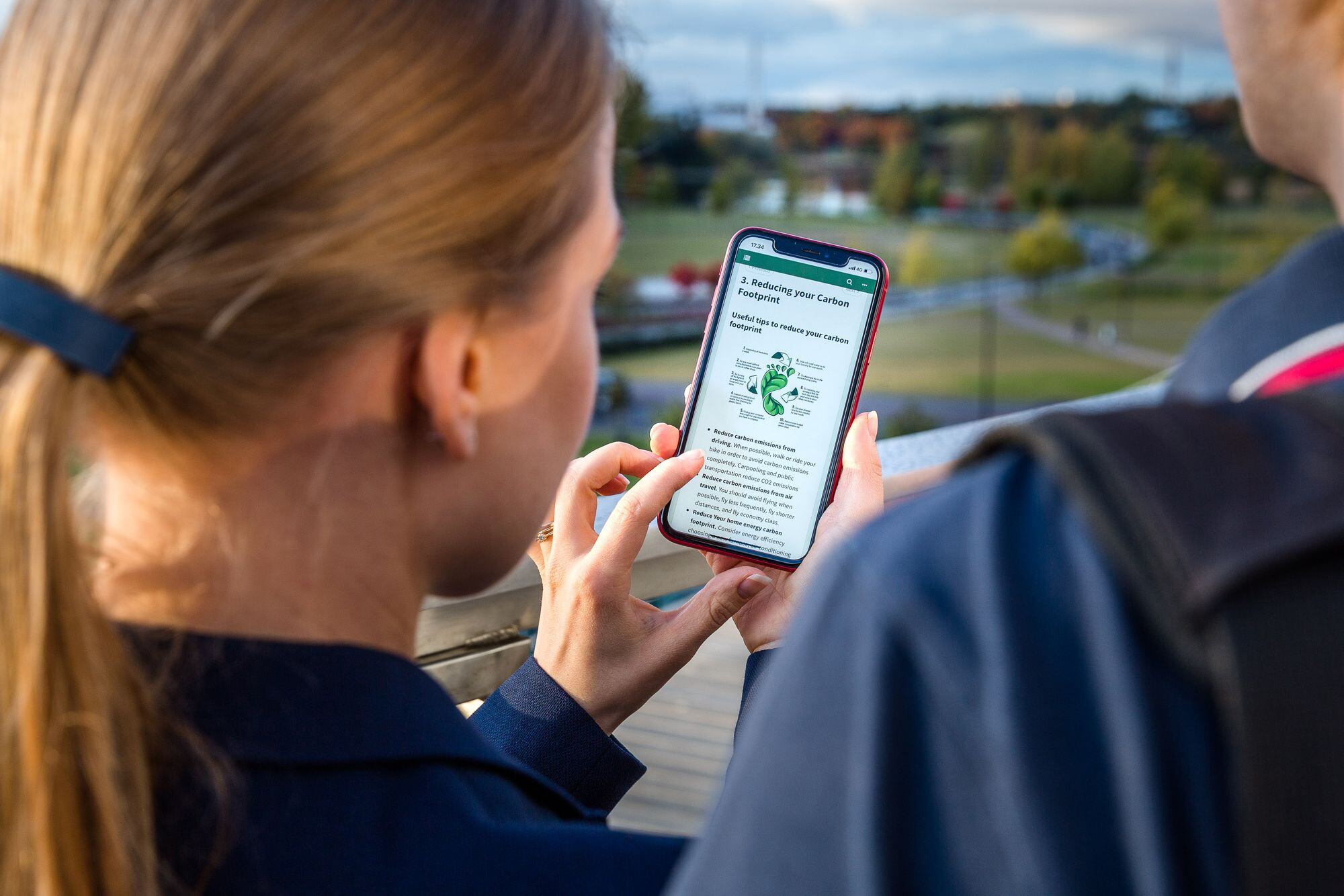Mobile learning brings educational opportunities within reach

Mobile learning is a way of learning, using mobile devices such as smartphones and tablets, which creates new learning opportunities. A smartphone is a key study tool that is always within arm’s reach – users can attend training courses whenever and wherever they like.
Thanks to mobile learning, online training courses can be used even when not all participants can access a computer. Using everyone’s own devices, rather than employer-provided computers, is a rapidly growing trend known as BYOD (Bring Your Own Device). More and more employees or students use their own smartphones to participate in training sessions.
Mobile learning enables more efficient use of time
Smartphones and tablets enable participants to attend online training even when there are no computers ready to hand, or using them would be impractical. For instance, learners can use their time efficiently and learn while travelling or waiting for their next meeting.
Mobile learning doesn’t require much planning ahead – as long as the student has their smartphone with them. This makes it easier to plan studies based on using spare moments when sitting on a bus crawling through morning traffic, or waiting for a workstation to become available. Training materials are always available; checking up on details has never been easier.
Mobile learning is particularly beneficial
- Training which users want to return to frequently
If you want your training materials to be available at all times, it’s best to design them for mobile use. For many people, smartphones provide a faster way - than computers - of reviewing instructions or checklists. - Training based on participants using their own devices
If training involves users’ own mobile devices, make sure that it runs on smartphones. In this way, digital onboarding or product training can be organized without devices arranged by an employer or service provider. - Training is done out of the office
Training should be designed for mobile devices if the idea is training during travel, on a construction site, at a factory or at home. Smartphones or tablets are often more cost-efficient and convenient and, thanks to their battery life and mobility, perform better than computers. - Training which is notoriously difficult to schedule
If finding time for a training course is difficult, it’s best divided into smaller parts (microlearning). Participation in manager or sales training is easier when there’s no need to attend for a whole hour at a time. Likewise, training that requires several short repetitions (e.g. studying foreign languages) is easy with a mobile device.
Because studying by a mobile device is slightly different to computer-based training, account should be taken of the specific features of mobile learning in course design.
Designing an online course for mobile devices
When designing a mobile training course, it should be noted that the content requirements change due to the smaller screen and keyboard and that the user’s online connection may be slower than on a workstation computer.

Checklist for the design of mobile training
- Divide the training into smaller sections
Mobile learning is often based on short sessions, so divide the course into smaller sections to support fast learning. This also makes it easier to revisit the material. - Favour short textual answers.
Many users find typing longer answers into a smartphone difficult, and autocorrect features often cause unintentional mistakes, so keep textual answers short. - Make use of exercises that don’t require typing
Multiple-choice exercises and picture and video answers are easier than writing on a mobile device. Use exercises of this kind in the mobile training material. - Make content easy-to-browse
Mobile learning is more easily interrupted than studying at a workstation or in class, so make sure that the user can easily return to where they left off. - Keep the course technically simple
Answering technically complex questions, or browsing technically complex content, can be difficult on a smartphone. Avoid content where the user needs to click on tiny areas, or which may not function well on all devices. - Reduce the size of videos and keep them short
Large files prolong video download times. The quality of videos intended for small screens can be reduced markedly, without the viewer being able to spot the difference. Keep your videos short.
Whenever possible, create subtitles for training videos so that they can be watched without sound. Sound is not always an option when using mobile devices.